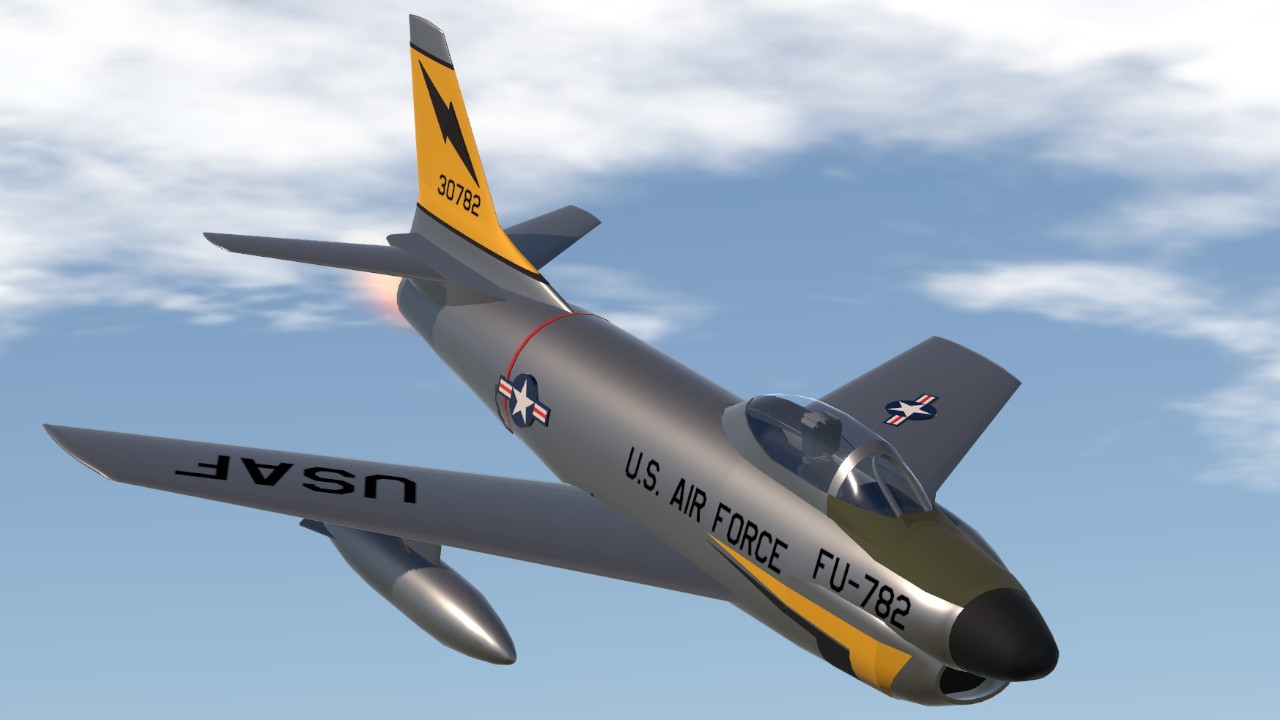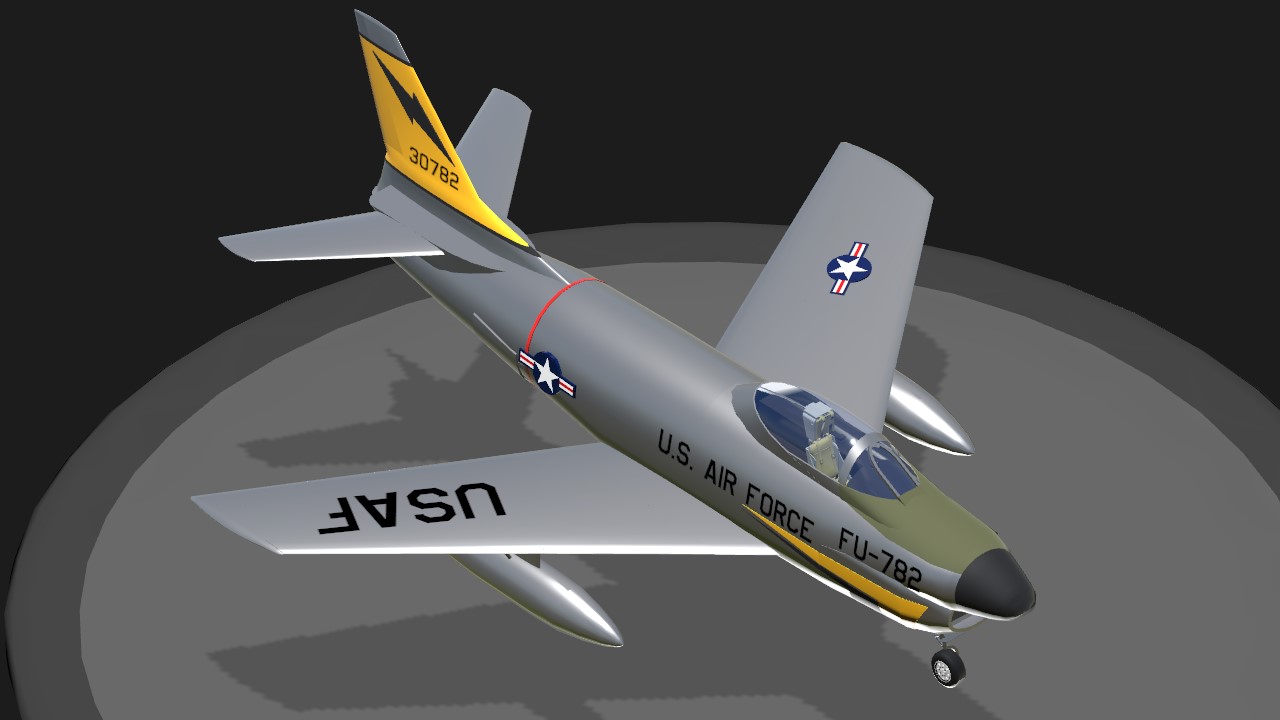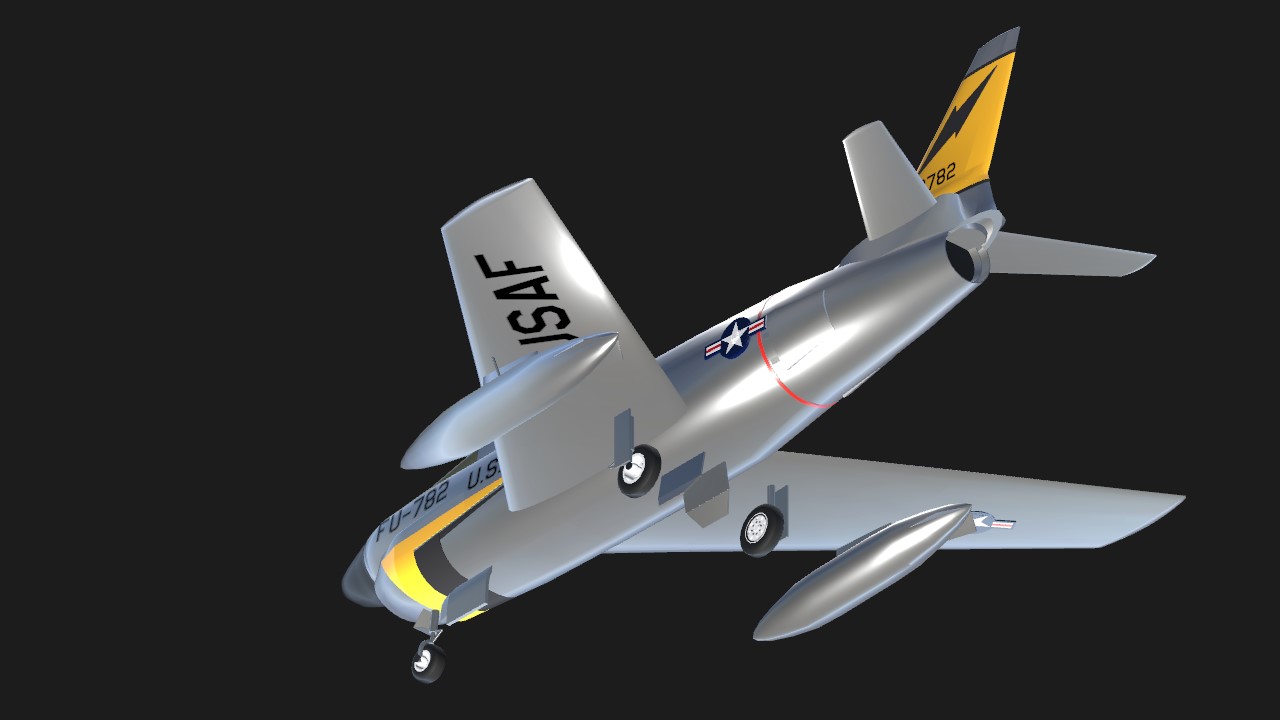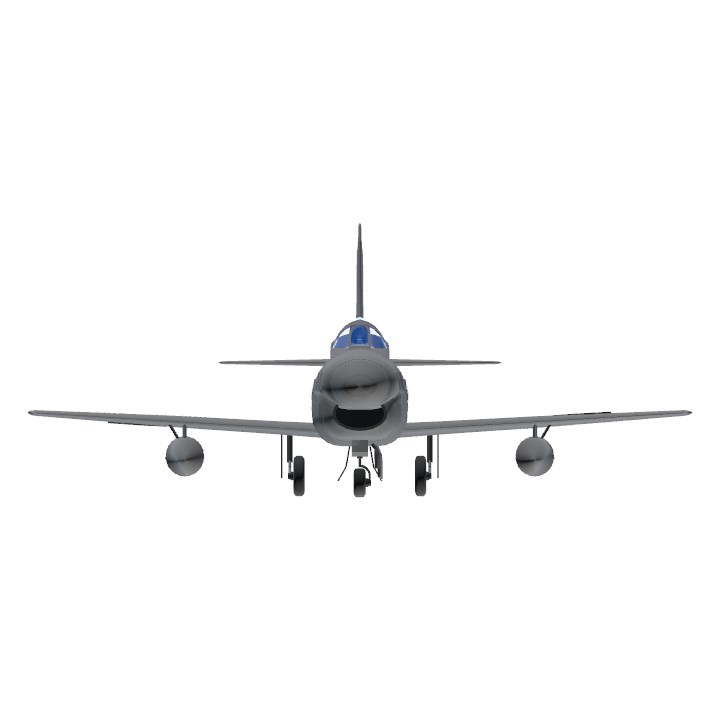The North American F-86D Sabre was a second generation jet interceptor, cutting edge for its time, that set a number of world speed records.
Gallery:




Features:
- Recreated with blueprints
- Fairly realistic performance
- A cool cockpit that should be VR compatible
- United States Air Force bare metal livery
- Deployable rocket pack with 24 Mighty Mouse rockets
Nonstandard Controls:
- AG 1 Nose Steering
- AG 2 Air Brake
- AG 3 Deploy/Retract Rocket Pack
- AG 4 Drogue Chute
- AG 5 Jettison Tanks
- Throttle>95% for Afterburner
- VTOL for flaps
- Trim for trim
Notes:
- Thanks @ChiChiWerx for the USAF roundels
- Thanks @EZkel for the original gunsight
- Remember, this is an interceptor! You will struggle to take on enemy fighters.
Background:
As North American Aviation worked on further developments of the F-86 Sabre, one concept was for a dedicated interceptor variant. Given the delays of the F-89 Scorpion project, the U.S. Air Force showed interest and the project proceeded. The aircraft was initially designated the F-95 because it was an extensive redesign, but the designation was soon changed to F-86D to appear as a new variant of an existing plane and secure funding. The D model of the Sabre would be nicknamed “Sabre Dog” by its pilots, a not entirely affectionate nickname.
The F-86D was a single-seat interceptor, the thinking being that technology had advanced far enough to eliminate the need for a backseat radar operator that would only add weight and reduce performance. It featured major changes over earlier Sabre models like a radar in the nose that required a redesign of the iconic nose and a more powerful engine that led to a wider and longer fuselage. It had the typical armament for 1950s U.S. interceptors: Mighty Mouse rockets, in this case mounted in a deployable pack on the belly of the aircraft. An advanced fire-control system would guide the pilot to the target and automatically fire the rockets at the right time. The aircraft also featured other innovations for its time, like an afterburner and a drogue chute to permit operations from shorter foreign runways.
The F-86D was ambitious for its time, but technology couldn’t fully meet its ambition. The pilot’s workload was high, and the aircraft took more training time to fly than any other plane in the Air Force. The electronics were finicky, and the rockets proved inaccurate. The added weight also meant it was less maneuverable than the standard Sabre. Nevertheless, the Sabre Dog had an impressive engine and set world speed records, first in 1952 and again in 1953. A version of the plane with a simplified fire control system and cannon armament in place of the rockets was exported throughout Europe as the F-86K. Eventually, when the D model was obsolete and being retired, it too was exported to U.S. allies around the world. Some Sabre Dogs were later upgraded to the F-86L standard which featured newer avionics.
Introduced in 1952, the Sabre Dog was already being phased out by 1956. As technology advanced, newer and more capable interceptors were being built every few years. Though not as well known today as other versions of the Sabre, it was a capable plane.
Specifications
Spotlights
- This craft is curated
- DeathStalker627 3.8 years ago
- Vincent 3.8 years ago
- Johnnyynf 3.8 years ago
- RicardoACE 1.9 years ago
- Sparky6004 3.8 years ago
- AvalonIndustries 3.8 years ago
- TheGoldenEagle55 3.8 years ago
- TheCommentaryGuy 3.8 years ago
- L1nus 3.8 years ago
General Characteristics
- Successors 1 airplane(s) +14 bonus
- Created On Windows
- Wingspan 38.5ft (11.7m)
- Length 40.2ft (12.2m)
- Height 15.3ft (4.7m)
- Empty Weight 11,001lbs (4,990kg)
- Loaded Weight 16,704lbs (7,577kg)
Performance
- Power/Weight Ratio 0.774
- Wing Loading 50.1lbs/ft2 (244.4kg/m2)
- Wing Area 333.7ft2 (31.0m2)
- Drag Points 729
Parts
- Number of Parts 343
- Control Surfaces 5
- Performance Cost 1,635







This does not the nose doesn’t look like an F 86. The rest of the plane looks great. The nose looks off. maybe correct the nose a bit and it will look way better.
Fiat G.91 on crack
goofy ahh clown from the Cold War
My bro's got a massive shnoz
Oddly enough reminds me of the P-51 in a way.
noice
I'm surprised that this is quite detailed even though it's mobile friendly, good job anyways.
can you make an f-86f with cockpit